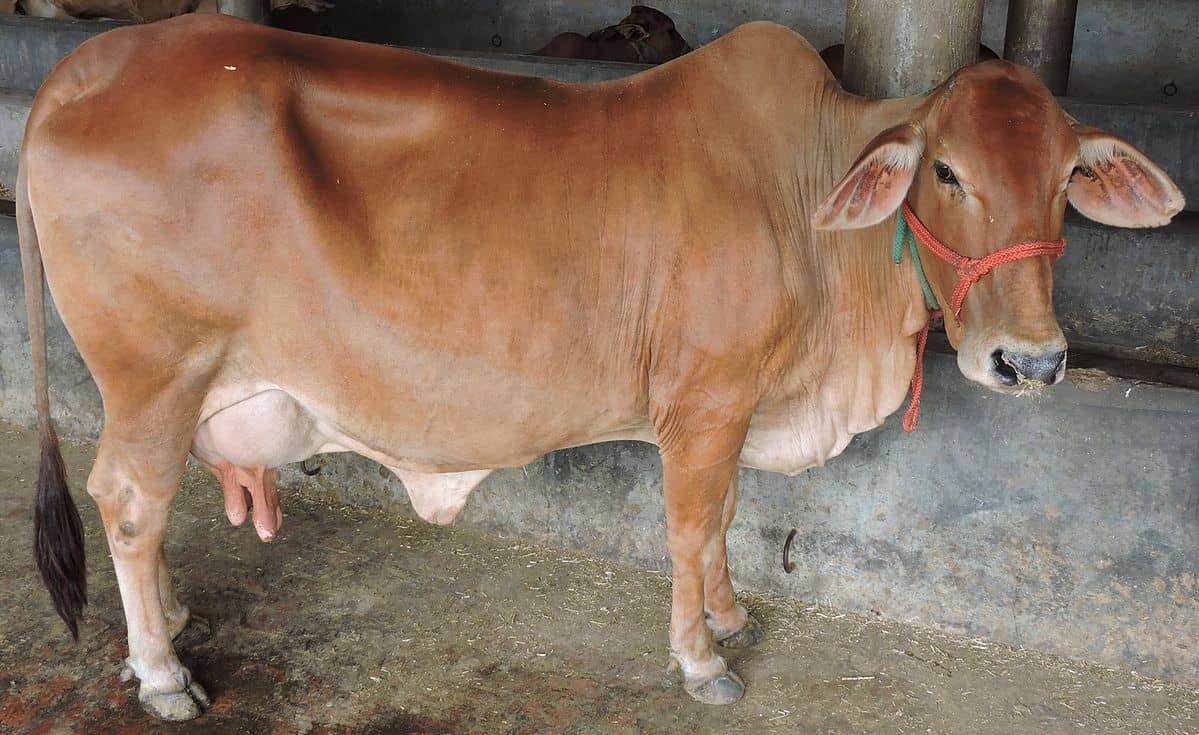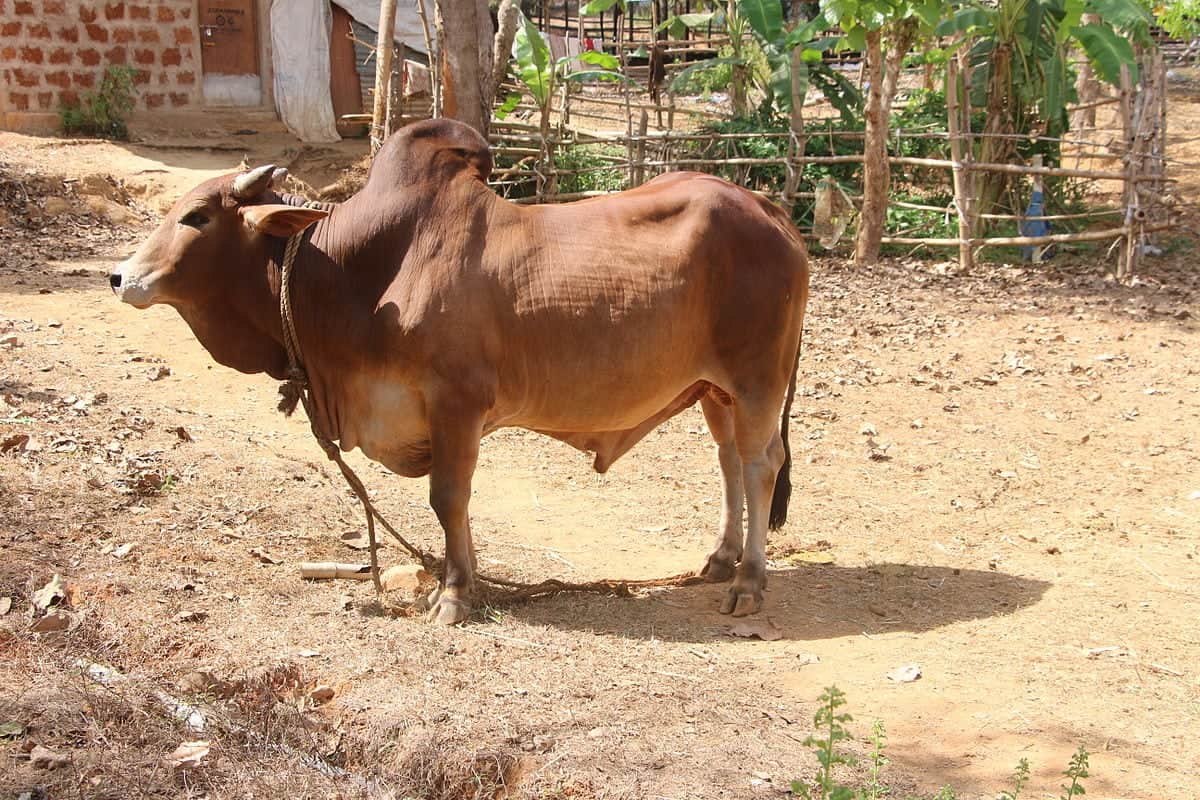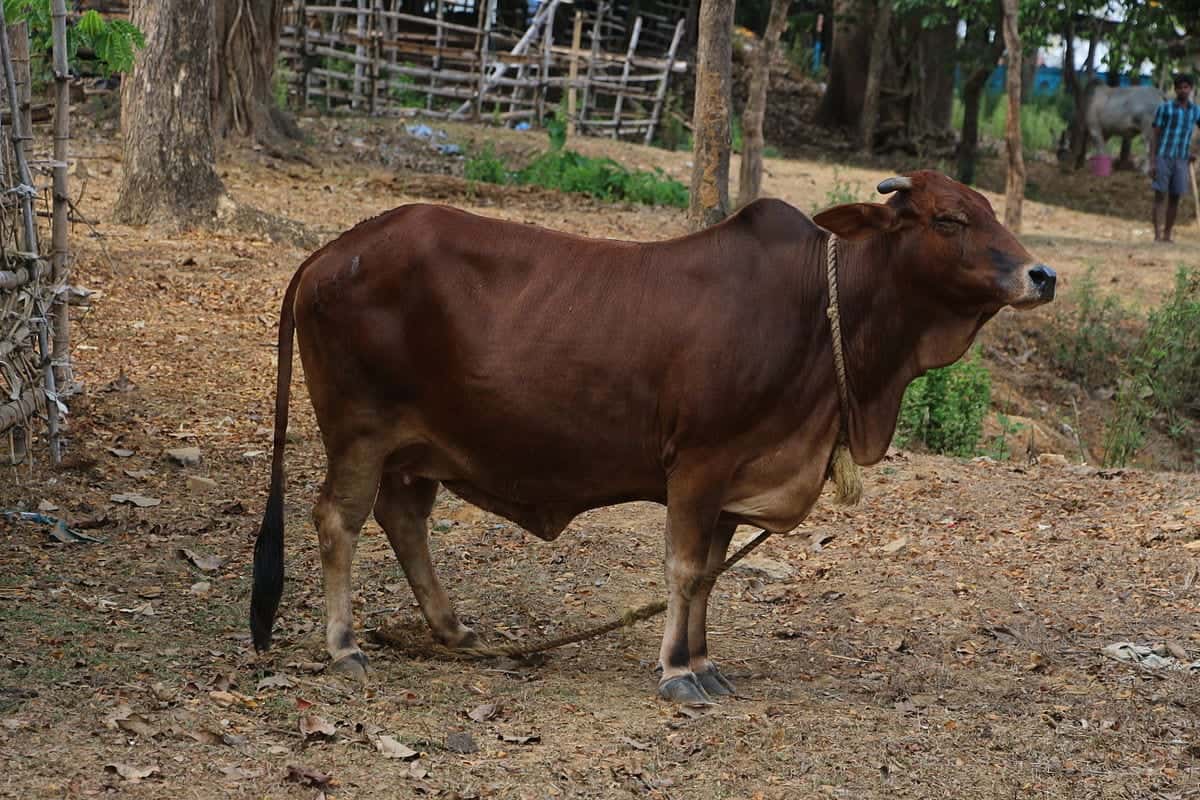Sahiwal cattle are considered to be a heat-tolerant breed of Zebu cow, named after an area in Pakistan. This cattle breed is also tick resistant which allows them to be farmed successfully in warmer climates due to their resistance to both internal and external parasites as well as heat. Sahiwal cattle are generally docile and peaceful to work with, making them ideal for slow work on farms.
Sahiwal cattle not only have a high heat tolerance and easy-going temperament, but they also have an attractive appearance. There is so much to know about this fascinating breed of cattle, and this article will give you all the information you need!

Quick Facts about Sahiwal Cattle

| Breed Name: | Sahiwal |
| Place of Origin: | Pakistan, India |
| Uses: | Dual-purpose |
| Bull (Male) Size: | 800-1100 pounds |
| Cow (Female) Size: | 940-1300 pounds |
| Color: | Reddish-brown |
| Lifespan: | 20 years |
| Climate Tolerance: | Warm climates |
| Care Level: | Easy |
| Production: | Milk and meat |
Sahiwal Cattle Origins
The Sahiwal cattle breed descends from a dry region in Punjab which lies along the Pakistan and Indian border. They were once kept in large herds in this region by professional herdsmen. With a new introduction of irrigation systems in the region, Sahiwal cattle were then kept in smaller numbers by farmers that inhabited the area and used primarily as dairy and draft cattle.
Today, Sahiwals are one of the best dairy breeds in Pakistan and India. Since they are drought-resistant and have excellent milk production, farmers began exporting these cattle to Asian countries, Africa, and parts of the Caribbean.
Back in the early 1950s, they were exported to Australia and New Guinea and in Australia, Sahiwal cattle were primarily selected to be a dual-purpose cattle breed. Sahiwal cattle played an important role in the development of two Australian tropical dairy breeds, and they are now primarily used in Australia for beef production.

Sahiwal Cattle Characteristics
Sahiwal cattle have many noticeable characteristics that make them ideal for farmers across the globe. One of the most noticeable qualities that make the Sahiwal cattle breed so popular is that they are both tick-resistant and heat tolerant. This makes it easy for farmers to keep herds of these cattle in a wide range of climates and farming conditions. Since Sahiwal cattle are highly resistant to parasites, they can be raised in wild areas without farmers having to worry about parasite treatments. This also affects the longevity of the herd being less likely to be wiped out through parasite invasions.
Sahiwal cattle have a high milk yield, which makes them perfect for dairy farmers. They are one of the heaviest milkers of the Zebu cattle breeds and display a well-developed udder. Sahiwal cattle are also well-known for their ease of calving and their ability to produce healthy calves.
Uses
Sahiwal cattle are a dual-purpose breed, and they are primarily used for both milk and beef production. In India, Sahiwal cattle are used for drafting purposes too. The characteristics of this cattle breed make them useful for both the milk and meat industry because they have a high milk yield and lean meat with an even cover of fat.
Appearance & Varieties
The color of Sahiwal cattle can range from reddish-brown to a more predominant red with varying amounts of white on their underline and neck. In males, the color darkens towards the neck, head, and tail. This is a medium-sized cattle breed, with the average weight of a mature bull being around 800–1,100 pounds, while cows are between 900 and 1,300 pounds. Both bulls and cows have horns protruding from the top of their head, however, it is more noticeable in bulls.
Male Sahiwal cattle have a prominent thoracic hump which makes them appear taller than females. The udders of the cows are well-developed with uneven teats. Both male and female Sahiwal cattle have long and droopy ears.
Distribution & Habitat
Sahiwal cattle are mostly bred in Pakistan for their excellent milking abilities, and in Australia for their beefing qualities. They were the main livestock in their original habitat in Pakistan throughout the last century. Since Sahiwal cattle have been reported for their excellent working qualities and dual-purposes in both the meat and dairy industry, they are now farmed in various areas and various climates.
- See Also: Randall Cattle Breed

Are Sahiwal Cattle Good for Small-Scale Farming?
Sahiwal cattle are ideal for both small and large-scale farming. Their simple care and dietary requirements along with their docile nature make them the ideal cattle breed to be raised on farms for beef, milk production, and light farm work. You will find that this cattle breed responds well to being farmed in a variety of different climates and conditions, from lush green farmland to dry bushveld.
Related Reads:
Featured Image Credit: Sahiwala 01, Wikimedia Commons CC SA 3.0 Unported
